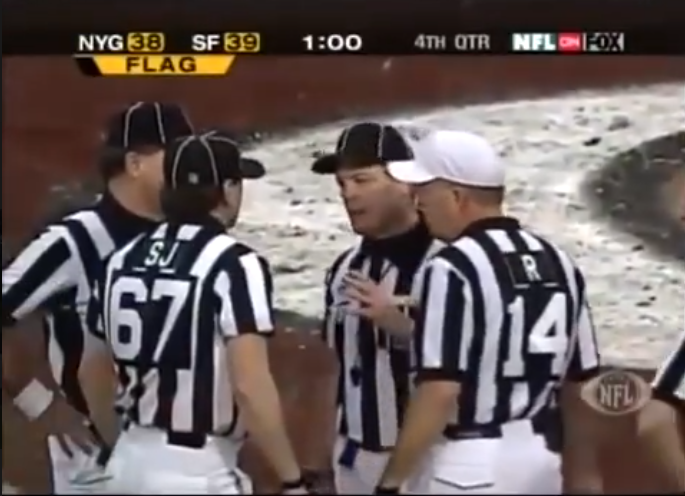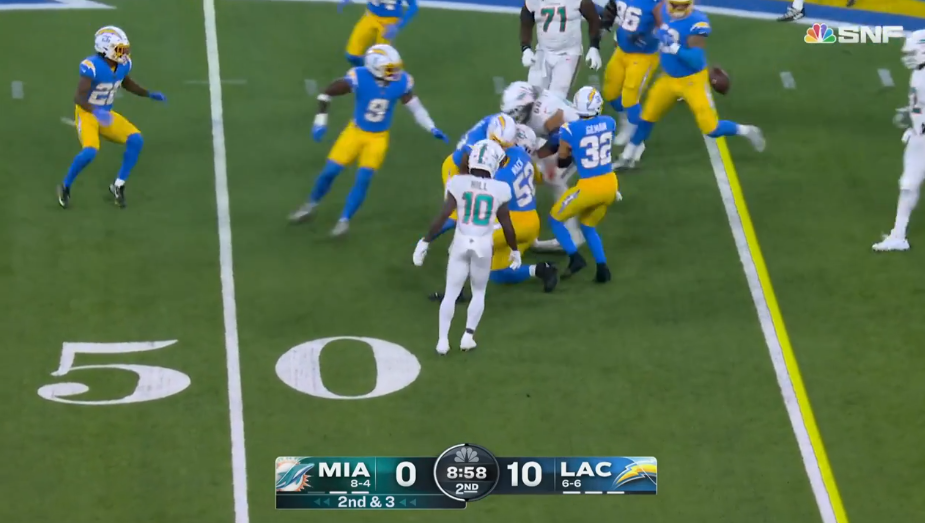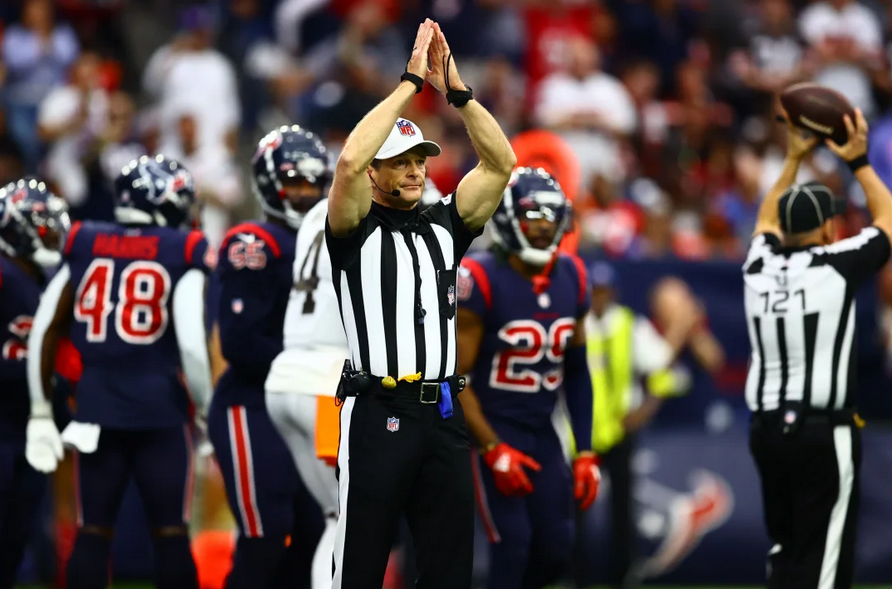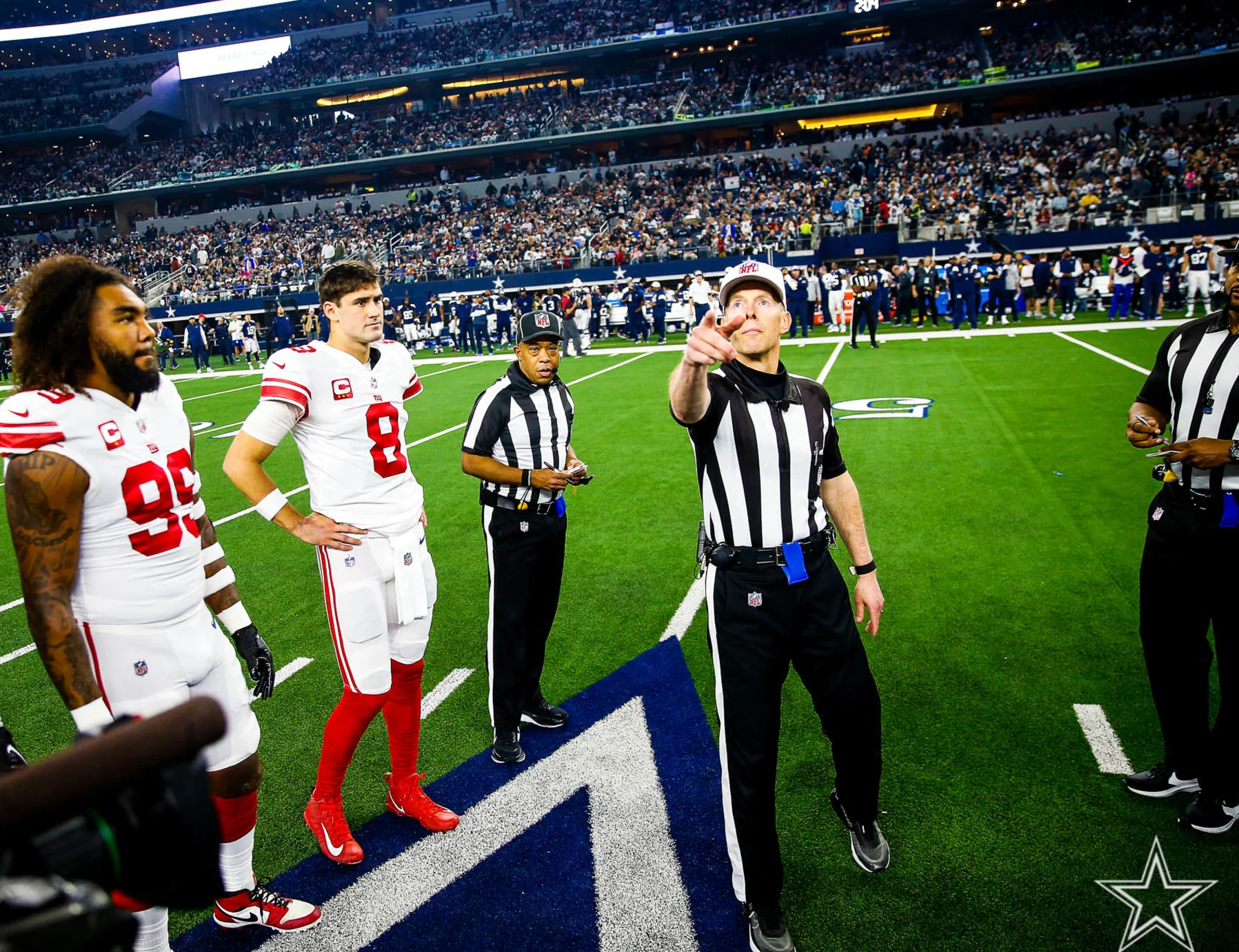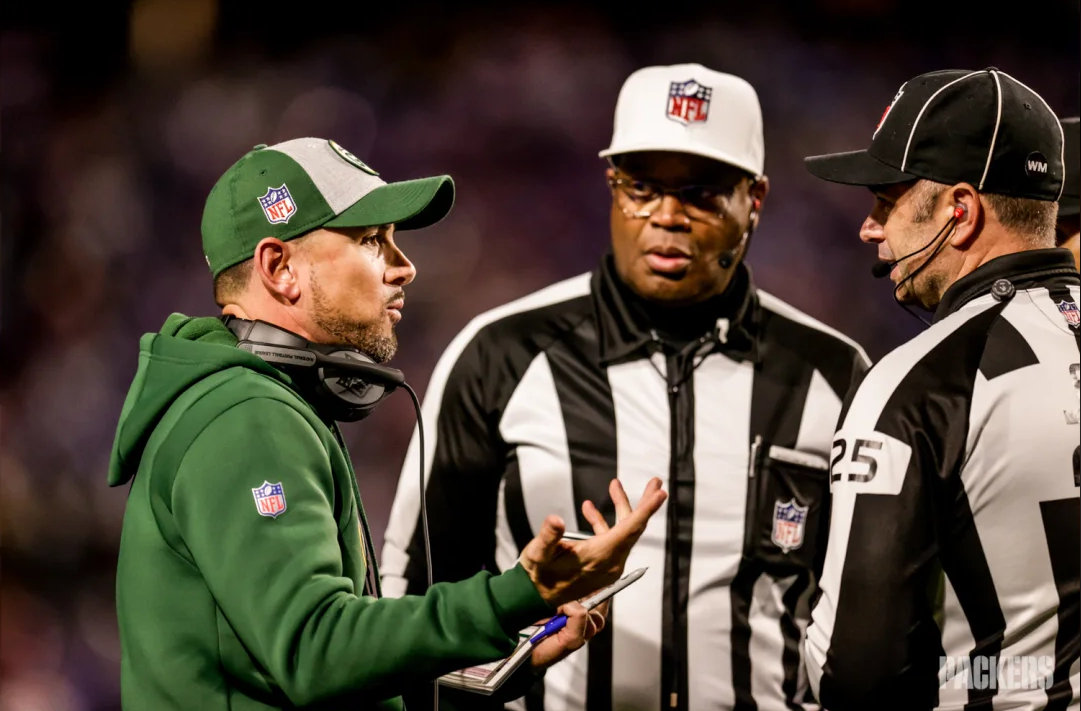Controversy
Anatomy of a replay gone wrong
NFC Divisional Playoff: Giants at Packers
1st Quarter | 1:46 | Giants 10-3 | Packers ball | 1st & 10 @ NYG 39 | video (at 1:21)
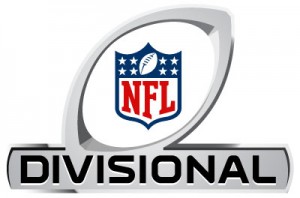 We are going to deconstruct the big call from Sunday’s NFC divisional playoff game, not to defend it, but to answer the questions surrounding it and the decisions that were made.
We are going to deconstruct the big call from Sunday’s NFC divisional playoff game, not to defend it, but to answer the questions surrounding it and the decisions that were made.
As the Packers were driving to answer a go-ahead touchdown by the Giants in the first quarter, quarterback Aaron Rodgers completed a pass to receiver Greg Jennings. Jennings turned up field and gained about three yards when the ball came loose.
The loose ball was immediately scooped up by Giants cornerback Kenny Phillips. The play continues live, so Philips runs about 12 yards before going out of bounds.
(1) Keeping the play alive. In the live camera angle and all of the replay angles aired on television, veteran head linesman George Hayward and side judge Larry Rose follow the action as Phillips returns the apparent fumble. The audience was whisked away to commercial, not knowing that a conference developed between the officials.
(2) Post-play discussion. The more that instant replay has become entrenched in the game has lead to a new officiating anomaly: let the play go and sort it out in the end. There is some merit to that approach, as whistles do not have erasers, but a call-by-committee can always be enacted after the fact.
The only other official that could be involved in the play is the back judge, Scott Helverson. His position, unseen in the replays, would be roughly the center of the field, and probably 10 to 20 yards downfield, so that he doesn’t get passed like a stalled car. (There exists an outside possibility that the field judge could have been involved, but he is patrolling the opposite sideline from the play.)
Probably Helverson saw something that gave him the impression that Jennings had a knee down prior to the fumble, or he would not have tried to appeal to the other two covering officials. In the end, the three officials came to an agreement that the play is down by contact prior to the fumble occurring.
(3) Why not just let replay sort it out? Replay is a tool to correct mistakes, not a crutch to buttress up flaky or indecisive calls. They must make decisions based on their observations in real time, and not what would be convenient for the replay system to sort out. Therefore, an official who, armed only with his observation, must make a decisive call (conferring with others if necessary) and stick with it. All of the officials that get playoff assignments are graded on their decisiveness in making calls, in addition to their on-field accuracy. Also, for an official to rely on the ability for a team to challenge a call deprives that team of one of their precious challenges.
(4) Giants challenge. Giants coach Tom Coughlin saw what we all saw from our favorite football-watching chair: Jennings lost control of the ball prior to being down. The challenge, had it been ruled in favor of the Giants, would have given them the ball, but the 12-yard runback by Phillips would not count, even though the officials originally let the play continue.
(5) Replay review. Up to this point, three officials were involved in the call. Now, referee Bill Leavy, in consultation with the replay official, will intervene on his sole judgement of the video. Leavy is allowed to observe one aspect of the play in one angle, and compare it to another aspect in a different angle. But, he only has 60 seconds to do so.
Remember, Leavy wasn’t covering the play, so some of that 60 seconds goes to getting the first visuals of the tackle.
To rule down by contact, the ball carrier must have a body part other than his hand or foot touching the ground while in possession of the ball. While the ball clearly came out prior to Jennings’ knee hitting, Leavy apparently focused on his shin. These are the angles he was served up:
- A. The ball is loose, but the ball carrier’s shin is obscured.
- B. Cannot see the ball from this angle.
- C. You can see the shin contacting the ground before the knee, but the ball is obscured.
- D. This angle was unavailable for replay, because it was broadcast after the 60-second time limit had expired.
Leavy should have noticed the position of the ball carrier’s elbow, because that could tell him when the ball was out in angle A and when the shin was down in angle C. The ball definitely came out prior to the shin contacting the ground.
(6) The call. In replay, the rule is that there must be indisputable visual evidence that the call on the field is to be overturned. If Leavy does not piece the angles together in time to make a decision, then he must leave the call as is.
As Leavy enters the field to announce his judgment, Helverson, the back judge, is seen walking with Leavy. Therefore, he must have been part of the original call.
After reviewing the play, the ruling on the field stands.
Had Leavy seen a body part on the ground prior to the ball out, he would have said the call was “confirmed.” Because he said it “stands,” it means that Leavy did not see conclusive evidence or his allotted review time expired.
(7) But what if the play was initially ruled a fumble? If the fumble and the runback were ruled initially, and the Packers challenged, then what? In this hypothetical, Leavy would have likely ruled the same: inconclusive evidence. The Packers would have lost the ball, the Giants would have been entitled to the 12-yard runback, and the Packers would not have had kept their touchdown drive going. It could have been a huge momentum shift in the game.
(8) The league responds. Rather than give a full-throated defense of Leavy, NFL spokeman Greg Aiello e-mailed a tepid response to Pro Football Talk, citing sections of the rulebook.
Referee Bill Leavy conducted the instant replay video review and determined that there was no indisputable visual evidence to warrant reversing the on-field ruling of down by contact. As a result, the ruling on the field stood.
What was said was true, in a plain, matter-of-fact fashion. What was not said is plainly visible behind the sheer curtain. The league backed up its employee’s judgment call. Nowhere in this response is Carl Johnson, the league’s vice-president of officiating.
Although the league is pretty staunch in its defense of Leavy, they will audit the video from the replay machine. The officiating department has a recording of the 60-second replay session, as well as any communication between the field and the replay booth.
(9) The bottom line. I don’t see any way this can be resolved by changing anything in the replay system. There have been suggestions to move all replay reviews to a central “war room†at the league’s offices in Manhattan, much like the NHL conducts its replay reviews at the home office.
However, it is still up to human judgment which is not without mistake. Who are the supervisors of the officials that make these decisions? They are former referees — referees just like Leavy. So at any given time, the same judgment is rendered.
Also, football is a complex sport. The referee at least has the opportunity to consult with the covering officials prior to viewing a replay. Sometimes there are many aspects of a replay reversal that need to be announced, which could lead to a misleading description if the decision is relayed to the official over the phone. It would be like taking down driving directions without paper – and 70,000 people looking at you.
But, clearly, the wrong call was made, and thankfully it did not result in a change of fortune in a playoff game.


















